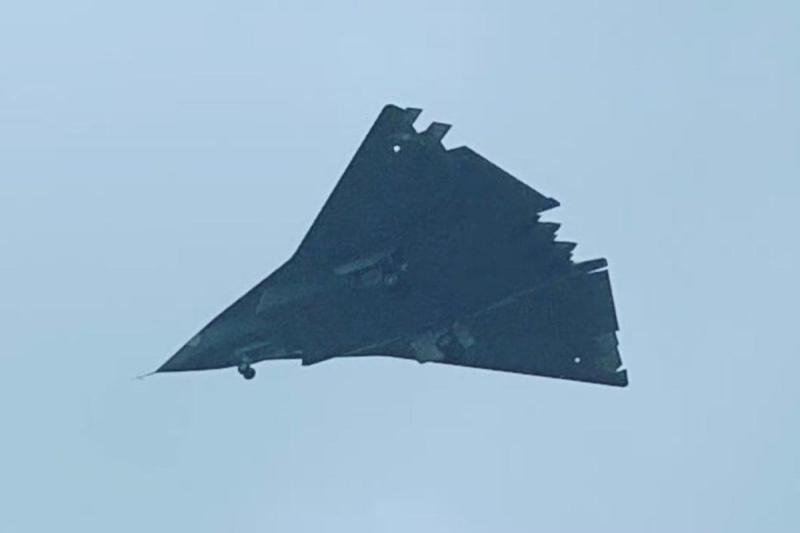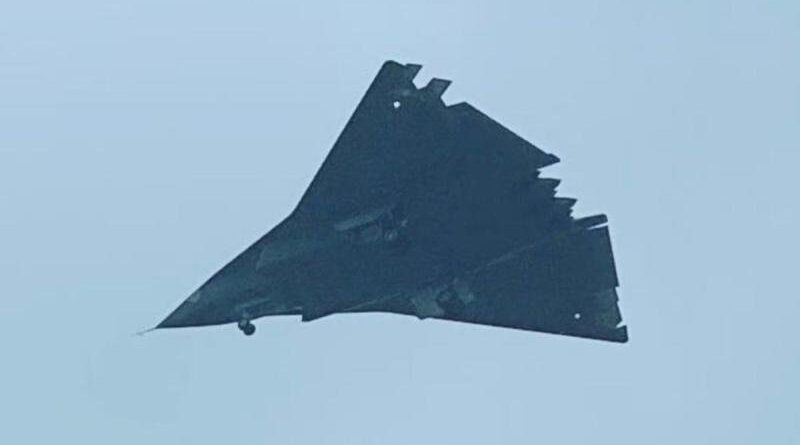China’s updated 6th-generation fighter jets put US on notice for air supremacy

Notable changes have been observed in both of China’s sixth-generation fighter programmes, with updated prototypes seen flying just 10 months after their first public appearance, indicating rapid progress as the country vies with the United States for air supremacy.
Photos circulating on Chinese social media since Tuesday showed what appeared to be Chengdu Aircraft Corporation’s sixth-generation fighter, bearing a tailless and three-engine design, conducting a test flight.
Unofficially referred to as the J-36, the aircraft is believed to be the second prototype, featuring significant upgrades such as angular exhaust nozzles replacing the recessed exhausts seen on the earlier version.
The nozzles’ shape closely resembles the two-dimensional thrust-vectoring exhausts used on the F-22 Raptor, America’s fifth-generation stealth fighter.
According to a report by The War Zone, an online news publication, the angular exhausts may help resolve stability and manoeuvrability issues during certain flight phases.
“Tailless designs are inherently extremely unstable. Thrust vectoring can help with this and maximise potential performance throughout the flight envelope, including at very high altitudes,” the report stated.
The new prototype has a unique triple-engine configuration with one dorsal and two lower air intakes. The intakes previously had a caret-like design but now use a diverterless supersonic inlet considered better for stealth operations.
Another visible modification is the J-36’s new landing gear, which now places the wheels side by side rather than in tandem, according to media reports.
The War Zone said these major changes pointed to an aircraft still very much in the stages of flight test demonstration and development and “possibly to an accelerated iterative design scheme” to rush the aircraft into a production-like state.
The outlet also reported that the aircraft could represent an alternative configuration rather than a direct evolution of the earlier prototype, although it said this appeared less likely to be the case at the moment.
The Chengdu-built fighter’s revamped appearance was spotted about a month after notable changes were seen on what appeared to be another tailless Chinese sixth-generation jet known as the J-50, developed by Shenyang Aircraft Corporation.
New photos in September showing the apparent removal of an infrared data boom from the J-50 suggested it, too, was in the middle of rapid development and may have entered its second prototype phase.
For both Chinese programmes, progress has been swift given that their prototypes were first observed in flight last December.
The developments coincide with US moves to advance its own sixth-generation fighter, the F-47. Announced in March, the F-47 is being developed by Boeing, and production reportedly began in September.
US Air Force Chief of Staff General David Allvin confirmed in September that the first flight of the F-47 would be targeted for 2028.
“We’re ready to go fast. We have to go fast,” Allvin said at the time.
When US President Donald Trump announced Boeing’s selection, he said experimental F-47 X-planes had been secretly tested for the past five years, with the first flight reportedly taking place in 2019.
It is unclear when China’s two sixth-generation jets began secret testing before their sightings last year. Media reports have reported that the J-20, a stealth fighter, advanced from its first demonstrator flight to service entry in just six years and one month.
If developed at a similar pace, the two new Chinese fighters could enter service as early as January 2031 and possibly years ahead of the US Air Force’s sixth-generation timeline, with the aircraft expected to enter service sometime in the mid-2030s, according to Military Watch magazine.
China has yet to officially unveil any loyal wingman drones meant to operate alongside its new sixth-generation fighters.
However, during the country’s large-scale military parade in Beijing in September, several new drone models were showcased.
They included two types described by Modern Ships magazine in October as “unmanned wingmen” designed to cooperate closely with crewed aircraft.
Meanwhile, in the US, Andril’s Fury drone (YFQ-44A), developed under the Air Force’s Collaborative Combat Aircraft programme, conducted its first flight on Friday. Another contender, General Atomics’ YFQ-42A, completed its maiden flight in August.
Source – Bangkok News




